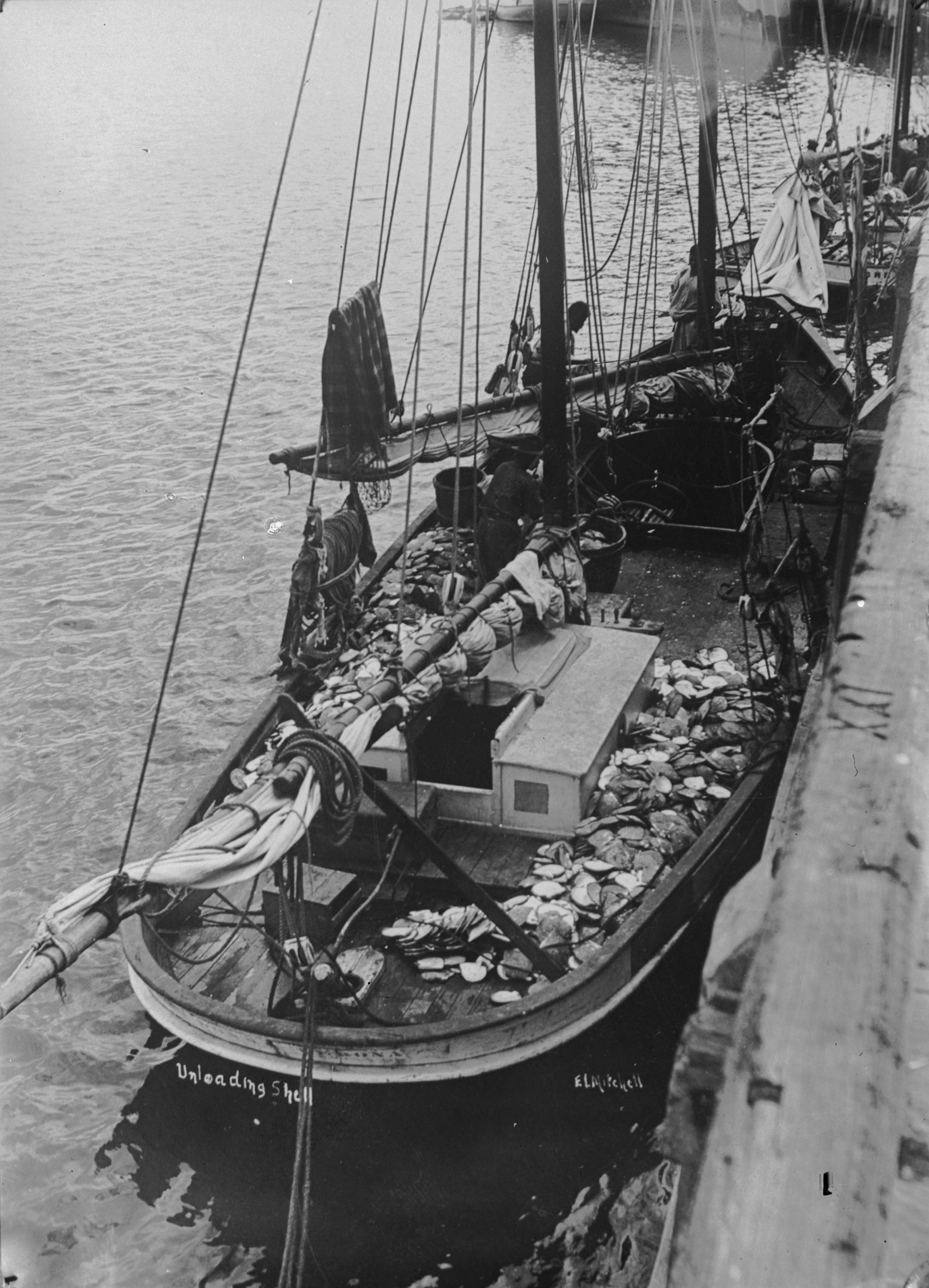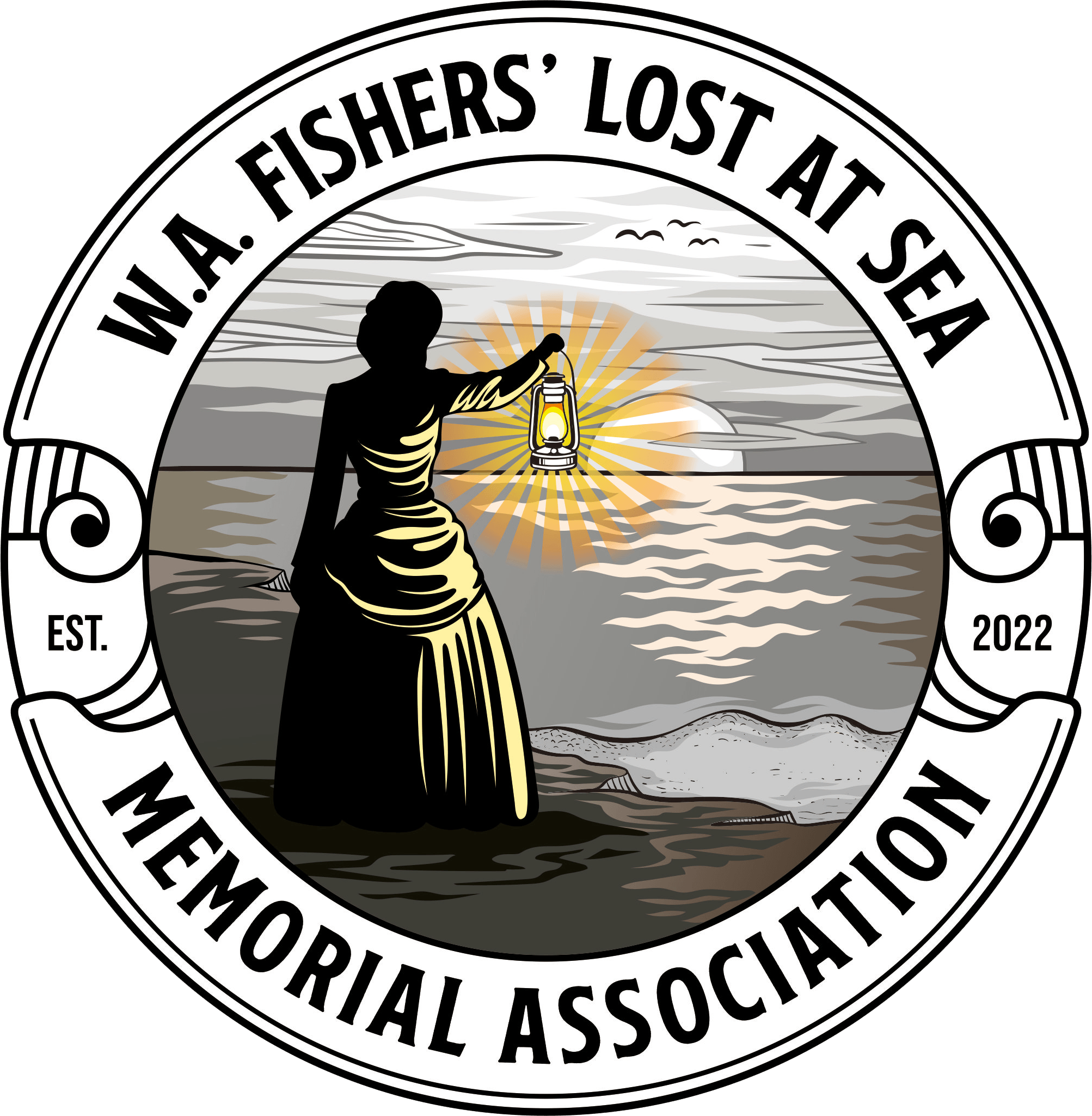Rover 1885
Vessel Name: Rover
Charles Doust
Yu Sing
Drowned when boat wrecked in a cyclone; bodies not recovered
1 December 1885

Lug sail cutters

Round stern cutter
Charles Theodore Doust was one of 15 children born to Isaac Uriah Doust and Frances Elizabeth Fellows. Charles was born in Toodyay on 8 June 1856. He and older brother Isaac, born in 1843 made their living on the ocean, and went pearling in the northwest. There is no record of Charles marrying or having children.
Rover was a 14 ton jarrah vessel, with two masts, a single deck and a round stern. She was recognisable by a lug sail [square-top]. Her dimensions were 12.5 x 4.1 x 1.5 metres. She was one of the earlier boats built at Port Walcott and registered in Fremantle as 5/1873. Her official number was 61109.
Rover’s first owners were John Edgar and Alexander Richardson, pearlers of Roebourne who owned and invested in other vessels other pearl vessels. After 1873 Rover was unregistered. Charles Broadhurst appears to be the owner.
Under command of Ernest E. Holmes, Rover sank in South Passage at Shark Bay. Like many boats of that time, Rover was refloated and put back to work. From December 1875 she appears to be owned by Charles Doust. Master Holmes remained aboard as the master.
Charles was in a sheep farming partnership in the Gascoigne area with William Criddle of Port Dongarra. That partnership was dissolved on 15 January 1881. The dissolution was advertised for weeks in multiple newspapers.
In January 1881, Charles was sinking a well on the farm property. Reportedly Charles and some workers were attacked by a group of armed Gascoigne Aboriginals, in retaliation for blackbirding. After several attacks, Charles shot his firearm towards the assailants, and they retreated.
Charles’ brother Isaac was master of the Swan, a 26.5 ton pearling vessel. He was involved in blackbirding Yinggarda and Malgana [Gascoigne] Aboriginals for pearling.
In April 1884, while Isaac was at Swan Point making repairs to his vessel he was murdered by some of his crew. Many of the Aboriginal people in the area lived inland far from the ocean and could not swim. Pearl diving was seen as a death sentence by those people. There were newspaper reports, government documents and letters written regarding “troublesome Gascoigne natives”, seeking revenge for theft of their family members and their mistreatment by unscrupulous masters. Requests were made by pearlers and pastoralists for increased policing in the area.
In 1885, Rover left Cossack for the Kimberley. She had been contracted for lightering work, unloading the steam ship Victoria anchored at Point Torment in King Sound [32 kms north of Derby]. At 11 am on 12 January Master Holmes left Rover and boarded Victoria to make unloading arrangements with her captain. Charles and a Chinese crew member Yo Sing remained on board. A Kimberley storm blew up and Ernest remained on board Victoria until midnight waiting for it to pass.
Initially the crew aboard the ss Victoria could see Rover in the reflection of the lightning flashes. As the easterly gale increased into a cyclone Rover could no longer be seen, but visibility was almost nil, and the raging storm was too fierce for Victoria to launch a boat to rescue Charles and Yo Sing.
At 8am on 13 January, when the storm abated and the tide receded, Ernest and the crew of Victoria saw four feet of Rover’s topmast above the waterline. She had foundered at anchor in seven fathoms [12.8 metres] of water.
Rover capsized and broke up. In the search that followed her upturned hull, a hatch, a cask and bits of cargo were found in the surrounding water. There was no trace of Charles or Yo Sing. Their bodies were never recovered.
